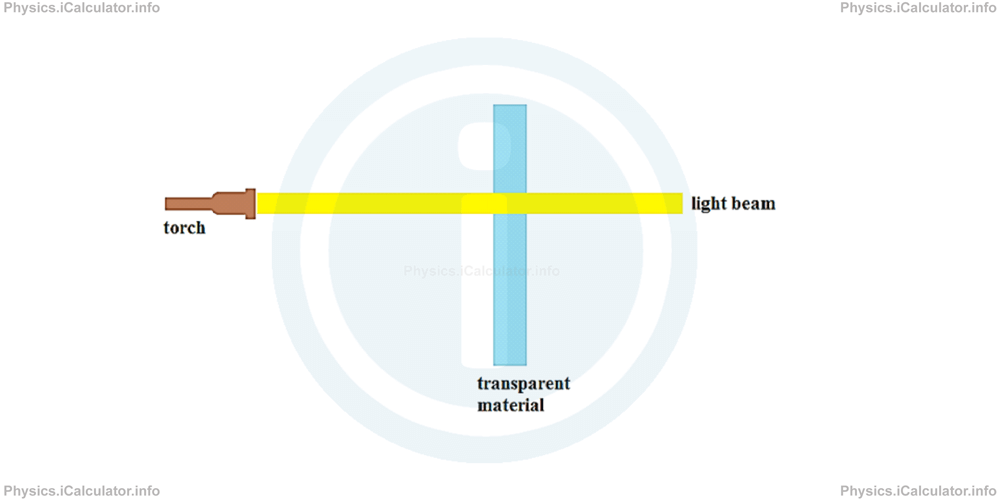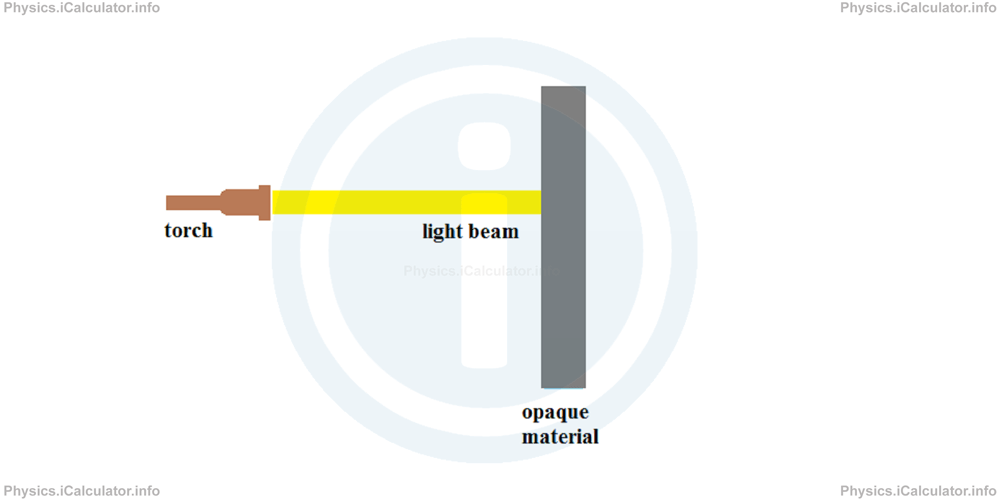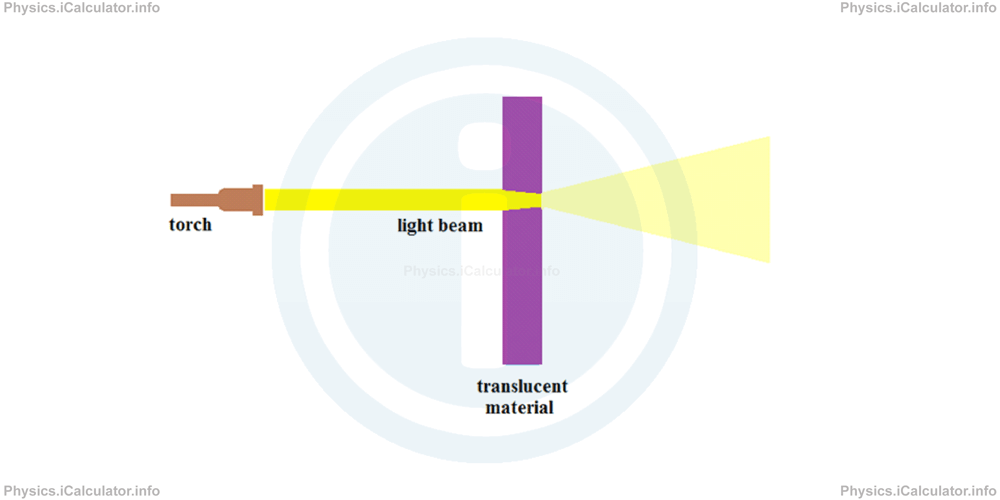Menu
Physics Lesson 12.1.5 - Media of Light Propagation
Please provide a rating, it takes seconds and helps us to keep this resource free for all to use
Welcome to our Physics lesson on Media of Light Propagation, this is the fifth lesson of our suite of physics lessons covering the topic of Features of Light, you can find links to the other lessons within this tutorial and access additional physics learning resources below this lesson.
Media of Light Propagation
Light cannot pass through all media. Some materials allow light pass through them. They are known as transparent materials or media. Vacuum, air, glass, water etc. are examples of transparent materials.
Any light beam penetrates regularly through transparent materials. As a result, we see everything through them.

The opposite of transparent is opaque, i.e. in such materials light cannot pass through. Metals, concrete, wood, etc. are examples of opaque materials.

There is also a third category of materials in which light passes only partially across. Furthermore, the beam is not regular anymore after passing through them. These materials are known as translucent.

As you see from the figure, the light is dimmer after passing through a translucent material. This means not all light waves are able to pass through such materials because some of the light waves falling on a translucent material are absorbed by the material itself (light is transmitted only partially through them). Furthermore, they will diffuse after leaving the translucent medium.
Examples of translucent materials include thin plastic materials such as plastic bags, dirty water, clouds, blurry glass, etc.
You have reached the end of Physics lesson 12.1.5 Media of Light Propagation. There are 6 lessons in this physics tutorial covering Features of Light, you can access all the lessons from this tutorial below.
More Features of Light Lessons and Learning Resources
Whats next?
Enjoy the "Media of Light Propagation" physics lesson? People who liked the "Features of Light lesson found the following resources useful:
- Media Feedback. Helps other - Leave a rating for this media (see below)
- Optics Physics tutorial: Features of Light. Read the Features of Light physics tutorial and build your physics knowledge of Optics
- Optics Revision Notes: Features of Light. Print the notes so you can revise the key points covered in the physics tutorial for Features of Light
- Optics Practice Questions: Features of Light. Test and improve your knowledge of Features of Light with example questins and answers
- Check your calculations for Optics questions with our excellent Optics calculators which contain full equations and calculations clearly displayed line by line. See the Optics Calculators by iCalculator™ below.
- Continuing learning optics - read our next physics tutorial: Reflection of Light
Help others Learning Physics just like you
Please provide a rating, it takes seconds and helps us to keep this resource free for all to use
We hope you found this Physics lesson "Features of Light" useful. If you did it would be great if you could spare the time to rate this physics lesson (simply click on the number of stars that match your assessment of this physics learning aide) and/or share on social media, this helps us identify popular tutorials and calculators and expand our free learning resources to support our users around the world have free access to expand their knowledge of physics and other disciplines.